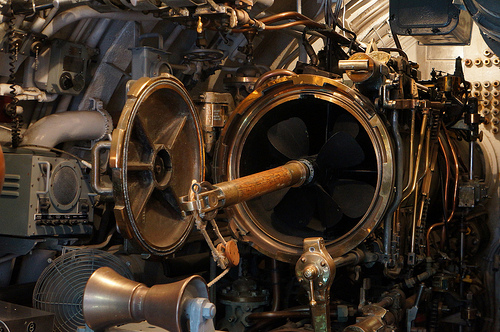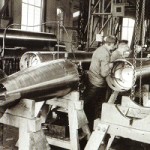We will never know exactly why the commander of U-30, Oberleutnant Fritz-Julius Lemp, decided to attack an unarmed British passenger ship on the first day of World War II — the central event in my book, Without Warning. Lemp’s motivation, however, isn’t the only element of this event that is shrouded in mystery. In keeping with the “fog of war” that tends to cloud witness perceptions, descriptions of U-30’s attack on Athenia come in many versions and in varying degrees of detail. This presented a challenge for me to write a vivid and credible description of the attack.
Of the many accounts I reviewed, a few maintained that Lemp fired four torpedoes when he first attacked Athenia. Most descriptions said he initially fired only two torpedoes, which sounds more reasonable. U-30 carried 11 torpedoes; one loaded in each of the four forward tubes, one in the aft tube and six stored beneath the forward torpedo room. While it was not unusual for a U-boat to fire a fan of four torpedoes when attacking a convoy with a horizon filled with targets, it seems unlikely that Lemp would have expended more than a third of his boat’s torpedoes at a single target on his first attack run of the war.
I chose the two-torpedo scenario for the book, with the first torpedo hitting its target. The question then became how to describe the second torpedo, which did not hit Athenia, and was described variously as a “misfire,” as “running wild,” and as being stuck in the U-boat’s torpedo tube. Erratic torpedoes were frequent occurrences for the German navy at the beginning of the war. There was a real danger that such a torpedo would trace a circular course back to the boat that launched it, and U-boats were occasionally sunk by their own torpedoes. The standard procedure was to dive out of the way of an errant torpedo. Several accounts described U-30 doing exactly that, while a few others said U-30 immediately dived deeper in an effort to dislodge a stuck torpedo.
Many passengers and crew members on Athenia saw a submarine on the surface moments after the initial attack, which would be inconsistent with U-30 having to dive to avoid the errant second torpedo. As noted in my previous blog, the most likely scenario to bring these accounts in line (and the one I chose) was that the second torpedo stuck in U-30’s tube and was set for magnetic detonation. Once it became armed, the torpedo would detect the U-boat’s hull and explode. Coming quickly to the surface would give some crew members a chance to survive if that happened.
Only a few of the attack scenarios I researched described the danger of a magnetic detonation with the stuck torpedo. Nearly all of these described the torpedo finally dislodging and falling harmlessly away. One account said the torpedo exploded a short distance from U-30 after it came free. Such an explosion could have been mistaken for the U-boat’s deck gun, which many Athenia passengers said was fired at them. U-30’s sailors swore the deck gun was never used. The exploding torpedo near the surface provided me with a plausible explanation for both views.
All accounts agreed that Lemp brought U-30 to the surface after nightfall to take a closer look at the ship he had attacked. In most of these descriptions, Lemp became concerned the ship wasn’t sinking or sinking fast enough and he fired at least one more torpedo while on the surface. Several passengers in lifeboats reported hearing or seeing a torpedo in the water, although one author said they might have actually been detecting a pod of playful whales or dolphins. In any case, the torpedo failed to detonate, although there appeared to be no concern about a circular run because none of the accounts describe U-30 making an emergency dive.
The scenarios all agree that during this period on the surface, Lemp was informed by his radio operator that the ship they torpedoed was radioing for help and identified itself as the Athenia. When Lemp checked his Lloyd’s Register of ships, he discovered his victim was a passenger liner and realized he had made a colossal mistake. He quickly left the scene without offering help or reporting his action to headquarters.
One reason there are so many varying descriptions of U-30’s attack on Athenia is that the most definitive account of the action — U-30’s war diary — was altered to show that the U-boat was far from Athenia’s location on the evening of Sept. 3, 1939. But that’s a story for our next blog.




